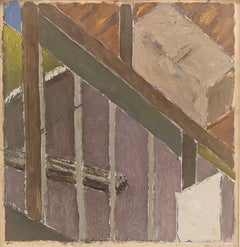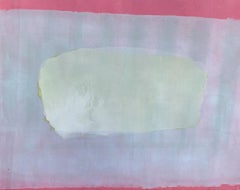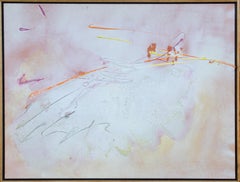Mernet Larsen
1980s Abstract Geometric Abstract Drawings and Watercolors
Paper, Oil
Recent Sales
1970s Abstract Expressionist Abstract Paintings
Canvas, Acrylic
1970s Abstract Expressionist Abstract Paintings
Canvas, Acrylic
1970s Abstract Expressionist Abstract Paintings
Canvas, Acrylic
1970s Abstract Expressionist Abstract Paintings
Canvas, Acrylic
1970s Abstract Expressionist Abstract Paintings
Canvas, Acrylic
1970s Abstract Expressionist Abstract Paintings
Canvas, Acrylic
1970s Abstract Expressionist Abstract Paintings
Canvas, Acrylic
1970s Abstract Expressionist Abstract Paintings
Canvas, Acrylic
1970s Abstract Expressionist Abstract Paintings
Canvas, Acrylic
1970s Abstract Expressionist Abstract Paintings
Canvas, Acrylic
1970s Abstract Expressionist Abstract Paintings
Canvas, Acrylic
1970s Abstract Expressionist Abstract Paintings
Canvas, Acrylic
1980s Abstract Expressionist Abstract Paintings
Canvas, Acrylic
1970s Abstract Expressionist Abstract Paintings
Canvas, Acrylic
1970s Color-Field Abstract Paintings
Canvas, Mixed Media, Acrylic
Mernet Larsen For Sale on 1stDibs
How Much is a Mernet Larsen?
Sherron Francis for sale on 1stDibs
Sherron Francis was born in the Chicago suburb of Downers Grove, Illinois in 1940. She studied fine art at the University of Oklahoma from 1958 to 1960 before transferring to the Kansas City Art Institute. She ultimately graduated from the Institute in 1963. In Missouri, Francis met Dan Christensen (Class of 1964), an artist friend, who would play a key role in her career throughout the next two decades. Francis then received her MFA from the University of Indiana before assuming a teaching position at Eastern Michigan University.
In 1968, with only $300 on hand, Francis moved to 16 Waverly Place in Soho. At the time, the neighborhood boasted some of the biggest names in Abstract Expressionism. She quickly became friends with Walter Darby Bannard, Peter Young, Larry Zox and Larry Poons, who all lived and worked in the neighborhood. In fact, Francis introduced Larry Poons to his now wife, Paula, a friend and student of Francis.
By 1971, Christensen, who was exhibiting with Andre Emmerich, introduced Francis to the legendary gallerist. There was no better gallery to be showcasing Abstract Expressionism and Color Field painting during this decade for an artist.
For context, in 1972, Emmerich held solo exhibitions by art titans, such as Hans Hofmann, Al Held, Esteban Vicente, David Hockney and Morris Louis. In 1973 alone, Emmerich gave one-person exhibitions to Helen Frankenthaler, Kenneth Noland, Hofmann, Jack Bush and a new discovery: 32-year-old Sherron Francis. The exhibition for Francis was a great success with Peter Schjeldahl positively reviewing it in the New York Times.
Francis’s career now took off with the stain paintings. In 1973, Francis exhibited at the Whitney Biennial and then received a second solo exhibition at Emmerich the following year. Corporate collections and private enthusiasts, including Helen Frankenthaler and Clement Greenberg, rushed to purchase her paintings. More than sixty of her paintings sold in one year at Emmerich’s gallery.
Throughout the 1970s and early 1980s, Francis exhibited at other leading American galleries, including Janie C. Lee, Barbara Kornblatt, Douglas Drake, Rubiner and Tibor de Nagy.
In the late 1970s, Francis became more interested in utilizing new acrylic and gel mediums that were becoming available. By 1980, she was also creating clay works and exhibiting them alongside Kikuo Saito and Betty Woodman. In 1983, art historian Jack Flam selected one of Francis’s paintings in his “Artists Choose Artists II” exhibition, consisting of works by Carl Andre, Jim Dine, Brice Marden, Richard Serra and Frank Stella.
Francis taught at several institutions including the Ridgewood School of Art and Design from 1972 to 1985 and Cooper Union from 1978 to 1985.
The landscape in downtown New York began to shift in the mid-1980s. When her landlord sold the building on Waverly Place, Francis moved to the North Fork permanently. Her move effectively severed ties with not just New York City, but also the art world, and her reputation went into eclipse. This sets the stage for rediscovery in 2022.
Find original Sherron Francis art on 1stDibs.
(Biography provided by Lincoln Glenn)
A Close Look at Abstract Art
Beginning in the early 20th century, abstract art became a leading style of modernism. Rather than portray the world in a way that represented reality, as had been the dominating style of Western art in the previous centuries, abstract paintings, prints and sculptures are marked by a shift to geometric forms, gestural shapes and experimentation with color to express ideas, subject matter and scenes.
Although abstract art flourished in the early 1900s, propelled by movements like Fauvism and Cubism, it was rooted in the 19th century. In the 1840s, J.M.W. Turner emphasized light and motion for atmospheric paintings in which concrete details were blurred, and Paul Cézanne challenged traditional expectations of perspective in the 1890s.
Some of the earliest abstract artists — Wassily Kandinsky and Hilma af Klint — expanded on these breakthroughs while using vivid colors and forms to channel spiritual concepts. Painter Piet Mondrian, a Dutch pioneer of the art movement, explored geometric abstraction partly owing to his belief in Theosophy, which is grounded in a search for higher spiritual truths and embraces philosophers of the Renaissance period and medieval mystics. Black Square, a daringly simple 1913 work by Russian artist Kazimir Malevich, was a watershed statement on creating art that was free “from the dead weight of the real world,” as he later wrote.
Surrealism in the 1920s, led by artists such as Salvador Dalí, Meret Oppenheim and others, saw painters creating abstract pieces in order to connect to the subconscious. When Abstract Expressionism emerged in New York during the mid-20th century, it similarly centered on the process of creation, in which Helen Frankenthaler’s expressive “soak-stain” technique, Jackson Pollock’s drips of paint, and Mark Rothko’s planes of color were a radical new type of abstraction.
Conceptual art, Pop art, Hard-Edge painting and many other movements offered fresh approaches to abstraction that continued into the 21st century, with major contemporary artists now exploring it, including Anish Kapoor, Mark Bradford, El Anatsui and Julie Mehretu.
Find original abstract paintings, sculptures, prints and other art on 1stDibs.
Finding the Right Abstract-paintings for You
Bring audacious experiments with color and textures to your living room, dining room or home office. Abstract paintings, large or small, will stand out in your space, encouraging conversation and introducing a museum-like atmosphere that’s welcoming and conducive to creating memorable gatherings.
Abstract art has origins in 19th-century Europe, but it came into its own as a significant movement during the 20th century. Early practitioners of abstraction included Wassily Kandinsky, although painters were exploring nonfigurative art prior to the influential Russian artist’s efforts, which were inspired by music and religion. Abstract painters endeavored to create works that didn’t focus on the outside world’s conventional subjects, and even when artists depicted realistic subjects, they worked in an abstract mode to do so.
In 1940s-era New York City, a group of painters working in the abstract mode created radical work that looked to European avant-garde artists as well as to the art of ancient cultures, prioritizing improvisation, immediacy and direct personal expression. While they were never formally affiliated with one another, we know them today as Abstract Expressionists.
The male contingent of the Abstract Expressionists, which includes Jackson Pollock, Willem de Kooning and Robert Motherwell, is frequently cited in discussing leading figures of this internationally influential postwar art movement. However, the women of Abstract Expressionism, such as Helen Frankenthaler, Lee Krasner, Joan Mitchell and others, were equally involved in the art world of the time. Sexism, family obligations and societal pressures contributed to a long history of their being overlooked, but the female Abstract Expressionists experimented vigorously, developed their own style and produced significant bodies of work.
Draw your guests into abstract oil paintings across different eras and countries of origin. On 1stDibs, you’ll find an expansive range of abstract paintings along with a guide on how to arrange your wonderful new wall art.
If you’re working with a small living space, a colorful, oversize work can create depth in a given room, but there isn’t any need to overwhelm your interior with a sprawling pièce de résistance. Colorful abstractions of any size can pop against a white wall in your living room, but if you’re working with a colored backdrop, you may wish to stick to colors that complement the decor that is already in the space. Alternatively, let your painting make a statement on its own, regardless of its surroundings, or group it, gallery-style, with other works.


